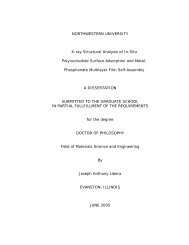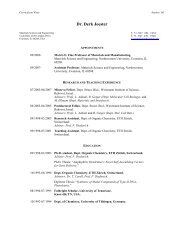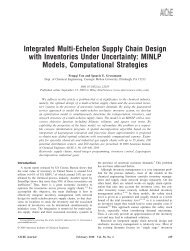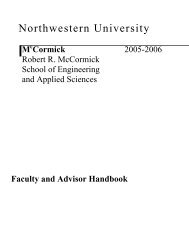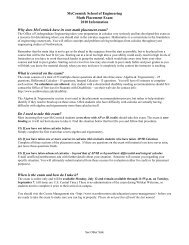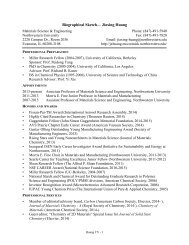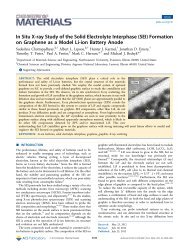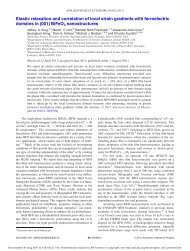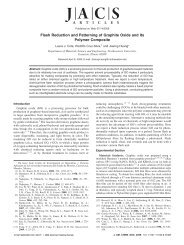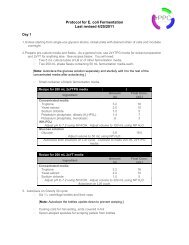Community-Based Operations Research - Humanitarian Logistics
Community-Based Operations Research - Humanitarian Logistics
Community-Based Operations Research - Humanitarian Logistics
Create successful ePaper yourself
Turn your PDF publications into a flip-book with our unique Google optimized e-Paper software.
Johnson and Smilowitz: <strong>Community</strong>-<strong>Based</strong> <strong>Operations</strong> <strong>Research</strong>Tutorialsin <strong>Operations</strong><strong>Research</strong>, c○ 2007 INFORMS 105Accountability, a traditional focus of public administration generally (Heinrich [35]; seealso Gates [27]) is especially important for community-based OR for determining the socialimpact of model solutions. Many important community-based services, targeted as they areon disadvantaged populations, generate relatively low levels of user fees and rely disproportionatelyon support from nongovernmental organizations. In turn, these donors maywant service providers to demonstrate that they have achieved significant client and systemoutcomes—but these are difficult to measure and communicate, as compared to process outputs.The implications of this criterion are twofold: There is an increased need for researchersto design effectiveness measures that can be easily implemented in community OR models,and there is an increased need for practitioners to work closely with funders to justify thesupport received.Finally, there is a general tension between uniqueness and generalizeability that affectshow community-based OR models and applications are viewed by disciplines that mighttake an interest in them. The greater the programmatic and spatial specificity of a givenapplication and the focus given to community engagement, the greater is the resemblanceof community-based OR to domains at the intersection of community planning, communityorganizing, and social work. As Kaplan [52] observes, this view of community-based ORmay have led Ackoff [3] to become disenchanted with the prospects of “traditional” OR as avehicle for making significant changes in society. The greater the generality of the model andthe application, the greater is the resemblance of community-based OR to decision modelingapplications whose contribution is primarily technical and methodological, or those, likepolicy modeling, that take a regional or national focus, decreasing the likelihood of direct,relatively rapid benefits to community stakeholders. Our belief is that, all else equal, thelong-term impact of community-based OR is likely to be greatest if emphasis is placed onmodels that provide specific, theory-based guidance to local decision makers that can beeasily replicated in different application contexts.1.3. Sample Application: Public-School System DesignAn example of an application that captures many of the characteristics of community-basedOR described above is that of an urban public-school district facing declining enrollment,increasingly rigorous educational quality targets and revenue shortfalls that must simultaneouslydecide on a set of schools to close and to combine, academic programs to relocate, andstudents to reassign (see e.g., Mar Molinero [64], and Johnson [41]). Table 1 demonstratesthe various dimensions along which community-based OR can help decision makers andstakeholders collaborate to generate specific recommendations for policy and operationalguidance.Results indicate that this problem is rich, in terms of opportunities for community engagement,mathematical modeling complexity, data requirements, and multi-stakeholder decisionsupport. A traditional OR approach to this application might emphasize sophisticated,high-quality solution algorithms for a somewhat stylized representation of the underlyingproblem, perhaps using simulated data, and a focus on efficiency and possibly effectivenessmeasures. A community-based OR approach might instead result in a model that capturesthe local environment more fully, and incorporate equity and effectiveness explicitly, thusimplying greater difficulty in optimal solution procedures. However, this approach might alsoresult in heuristic solution algorithms and strategies for model formulation and policy implementationthat emphasize qualitative methods more typical of UK-style community OR.1.4. A Taxonomy of <strong>Community</strong>-<strong>Based</strong> OR ApplicationsThere is no concise, standard classification of public-sector service areas known to us (a comprehensivelist of service areas is available on the U.S. Blue Pages, http://www.usbluepages.gov). For the purposes of this tutorial, we classify community-based OR application areas



